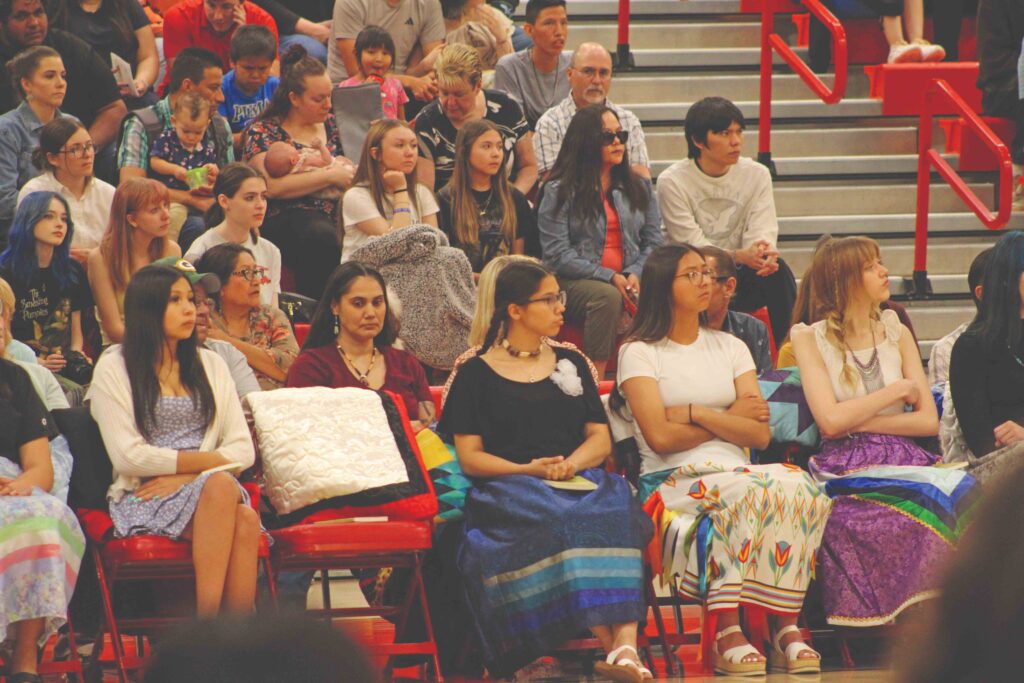Rapid City Area Schools celebrates record-number of Native American graduates.
Words by Kayla Gahagan
Ira Taken Alive is celebrating – and he’s doing it with a multitude of Native American families and their students who walked the graduation stage this year.
The Rapid City Area School District saw a record number of Native American graduates this year with an increase of 160 students, said Taken Alive, who serves as the Director of Culture, Climate and Indian Education for the district.
The fruit comes after more than a decade of concerted efforts to see more Native American students earn their diplomas.
Taken Alive said the credit goes to a team of people. “It really goes to my predecessors, including administrators, teachers, community programs, and the many ways they discovered to know more about the Native culture and to help students get to the point of graduating,” he said.
The district has employed a number of initiatives to help support Native students, Taken Alive said, including language classes, cultural activities and a Feathering ceremony to celebrate graduation.
Currently, more than 3,700 students identify themselves as Native, out of a total of 12,500 students. (According to district records, about 2,500 students are federally recognized as Native American.)
He also ties the boost this year to a pivotal addition – last year the district hired graduation success coaches who helped guide students at Central High School, Stevens High School and Rapid City Alternative Academy. The district will add more coaches this school year.
“It took the year to establish trust and really develop relationships with students, and then it was all hands on deck the last two to three months to help them get across the finish line,” Taken Alive said, and it made all the difference.
“Some students need that extra attention,” he said.
Next year, two more graduation success coaches start at Central High School, where a majority of Native students attend. One coach will be devoted to the Freshman class, and the other will join the existing graduation success coaches.
“I’m excited that we’re adding more coaches,”
he said. “To have a network of support from the first day of high school until you graduate will make a big difference.”
Some Native students face unique challenges when they enter high school, he said, especially if they have transferred from one of the reservations.
“It’s a shock, whether you’re in third grade, sixth grade or high school,” he said. “When you come from a high school that had 50 to 60 in the graduating class and your new school has 400 or more in the graduating class, it’s a lot.”
A graduation coach comes alongside, he said, to help students establish themselves socially, academically and culturally.
“They not only help the student navigate academic success, but also to introduce the student to activities that help them find a place in the school community,” he said.
Taken Alive is optimistic about the future.
“Over the years, our district has made an effort to understand statistics and better understand that Native students face unique challenges, especially socioeconomic challenges,” he said.
The district moved in the right direction, he added, by also elevating the Title 6 management position into a director position.
“That was a long time coming for the Native community to see this restored to a director position,” he said. “We’re included in leadership discussions and it means our Native students have a seat at the table.”
Taken Alive is encouraged by the changes – and ready to see another increase in graduation rates next year.
“I’m so proud of all of our students,” he said. “Some of them have overcome more obstacles than adults.”

